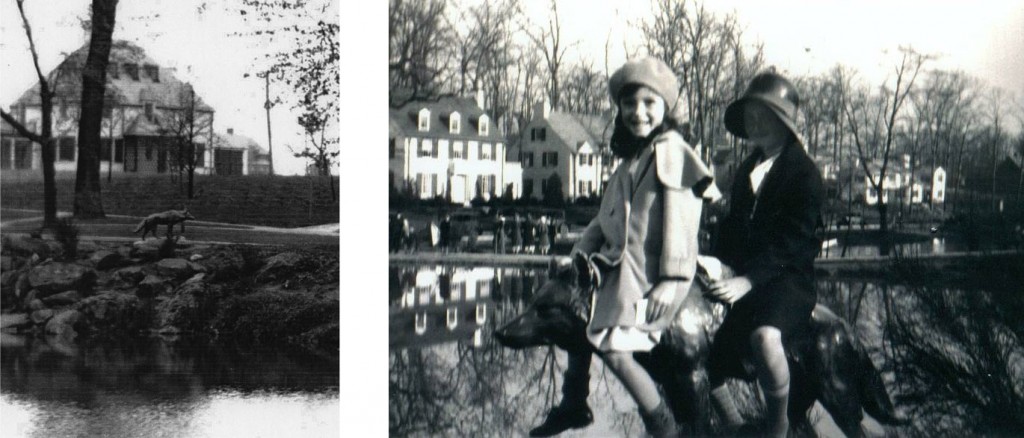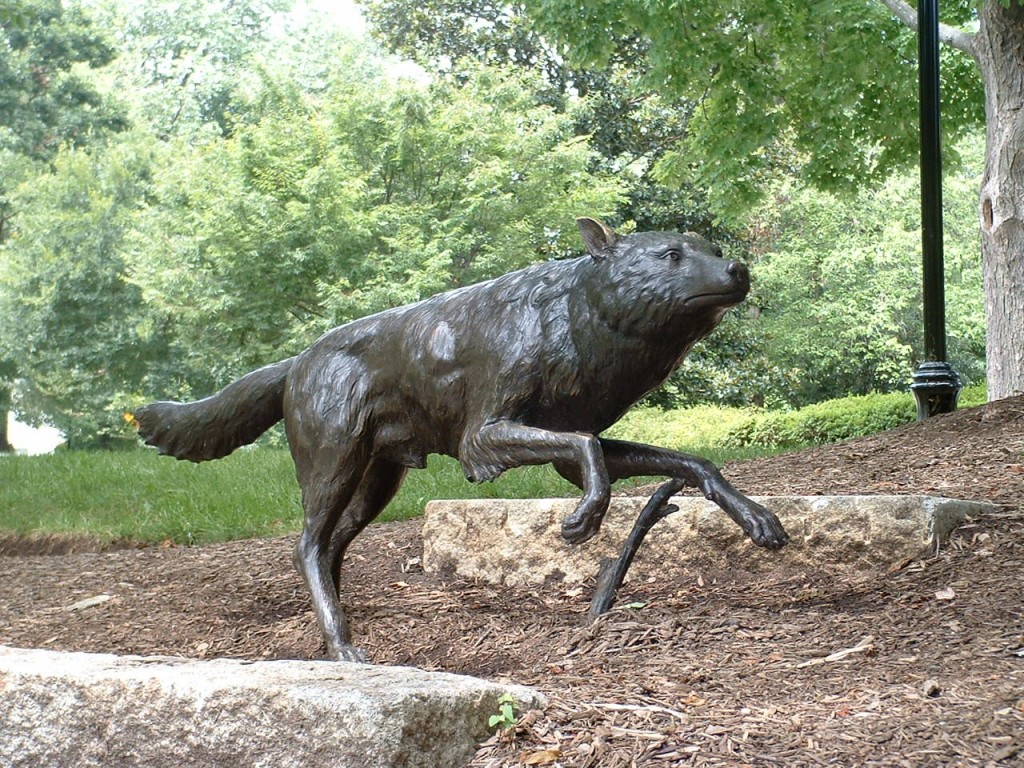Part of a monthly series of posts highlighting uncovered items of note, and the archival process brought to bear on these items, as we preserve, arrange, and describe the Roland Park Company Archives.
A few weeks ago I was gathering information on the founding of Roland Park Company neighborhoods as part of the contextual research archivists do to better understand their collections. Roland Park and its sister neighborhoods Guilford, Homeland, and Original Northwood all have active homeowners associations, each of which is linked above, and valuable histories on their websites. While reading through the facts on these pages, I found one page in particular that was quite fun: it asked for information on the long-gone “Homeland Wolf,” a piece of bronze sculpture that used to be in Homeland and disappeared in the 1930s. The images of the wolf below are used with permission from the Homeland Association and are circa the 1930s.
The Homeland Association replaced the original Wolf with a beautiful new piece in 2011.
Just a few days after browsing that site, I came across an unsigned document (circa 1935) among correspondence related to the Roland Park Nursery (as in plants and landscaping), and I was shocked! Here is the story of the wolf!
 I decided to do some research with the help of the internet and the resources available at the Sheridan Libraries. Have you ever done any art history research at Johns Hopkins? There is one aspect I was most interested in: provenance, or the history of ownership of a piece of art. Ultimately I came up empty-handed within the limited search I did, but let me show you how I did some basic provenance research.
I decided to do some research with the help of the internet and the resources available at the Sheridan Libraries. Have you ever done any art history research at Johns Hopkins? There is one aspect I was most interested in: provenance, or the history of ownership of a piece of art. Ultimately I came up empty-handed within the limited search I did, but let me show you how I did some basic provenance research.
Based on the information provided in the statement above, I have discovered the sculptor to be Edward Henry Berge (1876-1924), a local artist born in Baltimore and former resident of Homeland. The statement from the archives refers to the Grand Central Art Galleries in New York City (their archives are at the Archives of American Art), but the sculpture is said to have been sold in Washington DC according to page 269 of the book Outdoor Sculpture in Baltimore: A Historical Guide to Public Art in the Monumental City by Cindy Kelly (available at many local libraries and at Sheridan Libraries in multiple locations).
Using Google Books I also found a snippet view of the journal Antiques (available at JHU here) in volume 103 from 1971 that stated:
Edward Berge (Am. 1876-1924). “Wolf,” 1919. One of three castings by Roman Bronze Works, NY. Until now in the sculptor’s garden. Bronze and Ranile.
JHU does not have full-text electronic access back that far, and in fact does not appear to have that volume in print. But this is a clear avenue of research, and could be requested through Interlibrary Loan.
I searched for Edward Berge and Wolf on all of the core art history databases listed in the Art History subject guide here at Sheridan Libraries, including Art Full Text, Art Index Retrospective: 1929-1984, and ARTSTOR and I found a lot related to the sculptor and his other work. Finally, a search on an auction records database artnet did not give any additional insight on the exact sale I was looking for, since neither cast of Wolf has appeared in a recent auction.
Unfortunately, I had to stop there, but I have since learned from the Homeland Association that Wolf was perhaps sold by Weschler Galleries in Washington, D.C. So I had to stop there, but you don’t! Can you discover the provenance of the Homeland Wolf?


